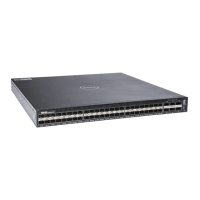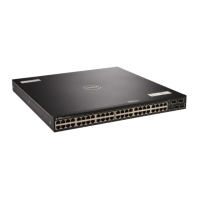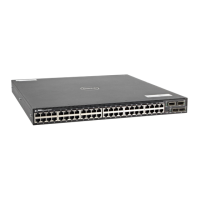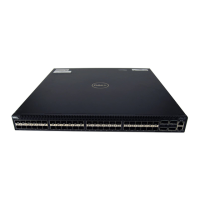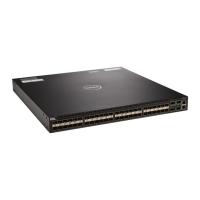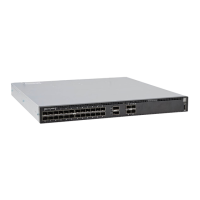The default is disabled.
The range is from 1 to 31.
Enabling Strict-Priority Queueing
In strict-priority queuing, the system de-queues all packets from the assigned queue before servicing any
other queues. You can assign strict-priority to one unicast queue, using the strict-priority command.
• Policy-based per-queue rate shaping is not supported on the queue configured for strict-priority
queuing. To use queue-based rate-shaping as well as strict-priority queuing at the same time on a
queue, use the Scheduler Strict feature as described in Scheduler Strict .
• The strict-priority supersedes bandwidth-percentage configuration.
• A queue with strict priority can starve other queues in the same port-pipe.
• Assign strict priority to one unicast queue.
CONFIGURATION mode
strict-priority
The range is from 1 to 3.
Weighted Random Early Detection
Weighted random early detection (WRED) is a congestion avoidance mechanism that drops packets to
prevent buffering resources from being consumed.
The WRED congestion avoidance mechanism drops packets to prevent buffering resources from being
consumed.
Traffic is a mixture of various kinds of packets. The rate at which some types of packets arrive might be
greater than others. In this case, the space on the buffer and traffic manager (BTM) (ingress or egress) can be
consumed by only one or a few types of traffic, leaving no space for other types. You can apply a WRED
profile to a policy-map so that specified traffic can be prevented from consuming too much of the BTM
resources.
WRED uses a profile to specify minimum and maximum threshold values. The minimum threshold is the
allotted buffer space for specified traffic, for example, 1000KB on egress. If the 1000KB is consumed, packets
are dropped randomly at an exponential rate until the maximum threshold is reached (as shown in the
following illustration); this procedure is the “early detection” part of WRED. If the maximum threshold, for
example, 2000KB, is reached, all incoming packets are dropped until the buffer space consumes less than
2000KB of the specified traffic.
Quality of Service (QoS) 852
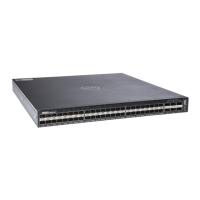
